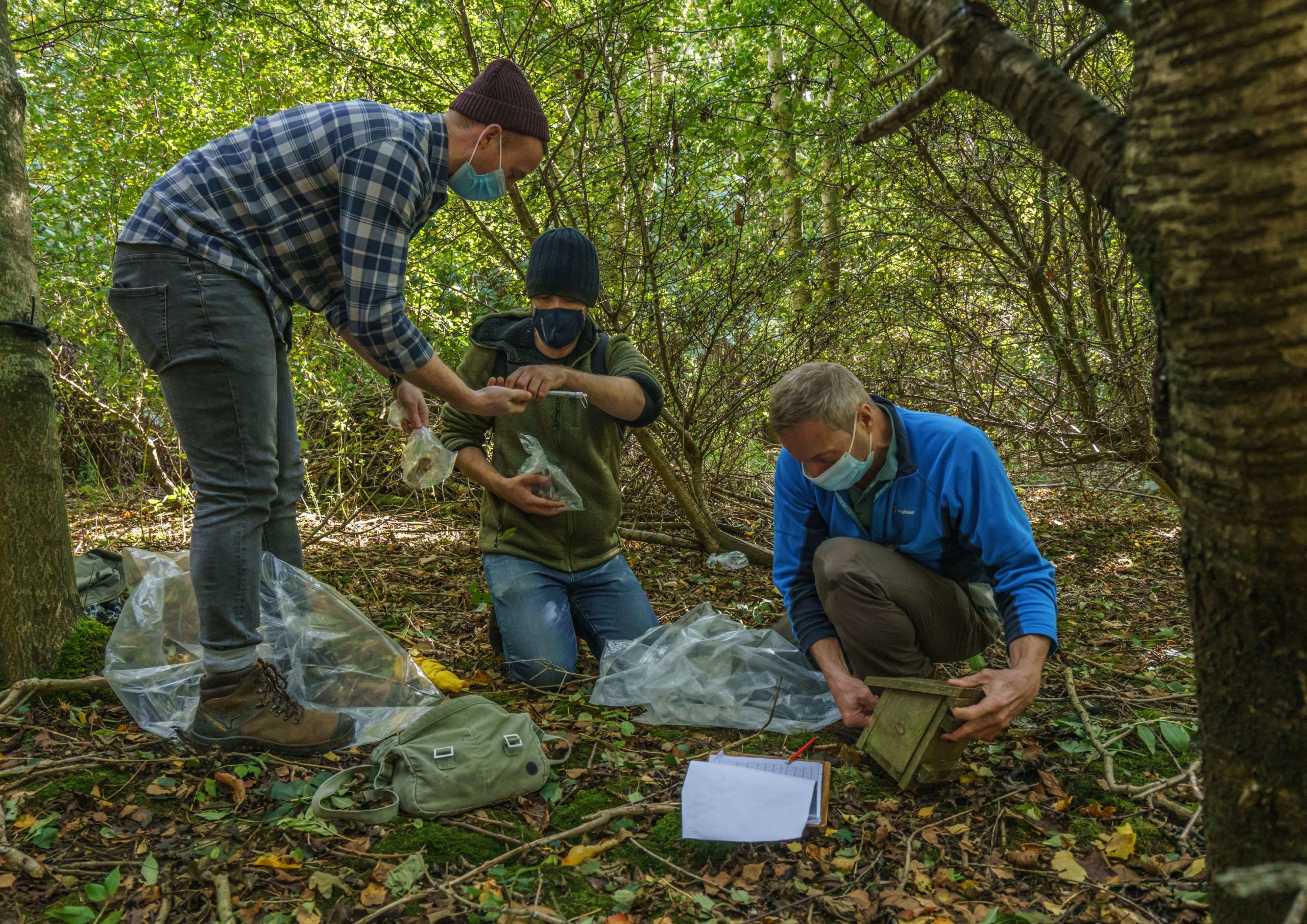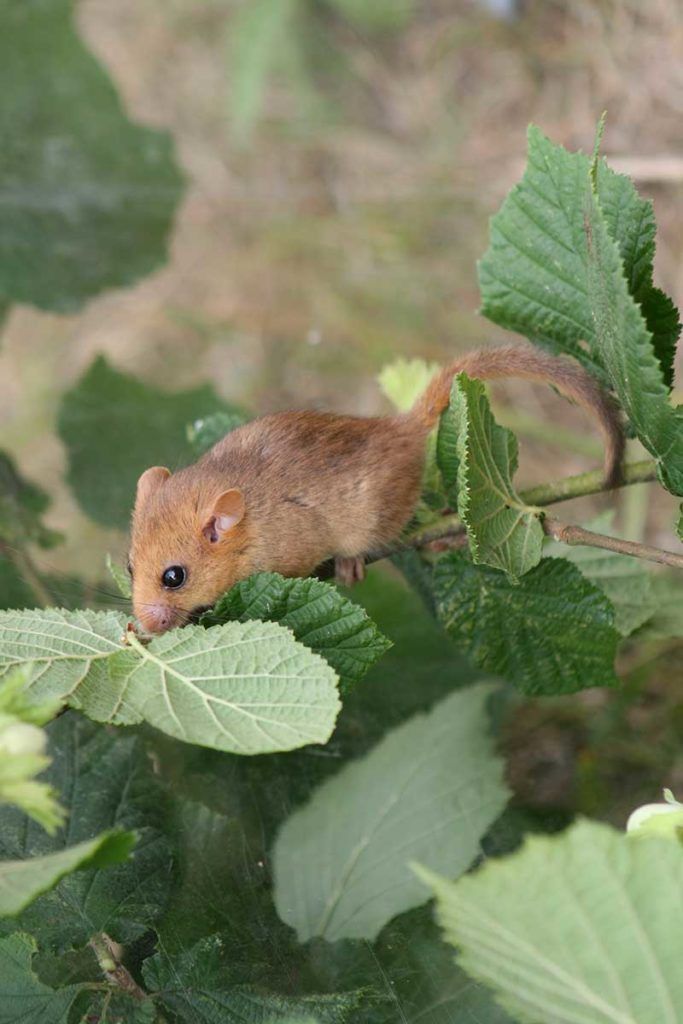National Dormouse Monitoring Programme (NDMP)

The NDMP monitors the long-term dormouse population trend. Each site contains a minimum of 50 dormouse boxes installed in a woodland or hedgerow. They are checked at least twice a year, in May or June and September or October between the 15th and 25th of the month. The number, sex, weight and age of dormice found are recorded and we collect the results, which together provide the data for The State of Britain’s Dormice report (previous papers published in 2016 and 2019).
If you find a dead dormouse, if possible please send the carcass to ZSL for a post mortem following the advice from ZSL.
The advice for monitoring in the presence of SARS-CoV-2 has lessened, but there is still a concern as the virus has been identified in rodents but the effects are unknown.
- Anyone who is experiencing flu-like symptoms, or suspects that they may have covid, should not attend a dormouse check.
- When handling dormice they should be kept at least half an arm’s length from the face.
- When collecting biometric data on dormice, keep handling to a minimum.
- Gloves should be worn, or hands sanitised between handling animals from different boxes.
- The current advice from DRAHS is that face masks are worn when handling dormice.
- Any equipment used on different sites should be thoroughly washed between uses.

Set up a site
To set up an NDMP site, the site must contain dormice and you’ll need landowner permission for long-term monitoring. You could look for dormouse opened hazelnuts or use footprint tunnels to determine whether dormice are present. A disturbance license is required for box checking. Additional help for licensees, trainers and trainees is available here. We may be able to provide dormouse boxes at a nominal cost as part of our dormouse box scheme.
To register as a monitor or set up a new site please contact susan.sharafi@ptes.org or call 020 7498 4533. Registered monitors can download the NDMP guidelines and forms 2024 and enter data online. Please ensure all data is entered by the end of the year.
Monitors are emailed Dormouse Tales on all things dormouse four times a year and you can sign up to an online dormouse discussion forum. Please contact susan.sharafi@ptes.org.
We are extremely grateful to all our dormouse monitors for their contribution to the programme and to our partners at Natural England.
How does your site compare?
You can compare how well your site is faring with our site at Briddlesford Woods on the Isle of Wight.
Total number of dormice in spring and autumn recorded in UK regions compared with Briddlesford per 50 boxes.
Total number of mature dormice in spring and autumn recorded in UK regions compared with Briddlesford per 50 boxes.
Total number of litters of dormice in spring and autumn recorded in UK regions compared with Briddlesford per 50 boxes.
Data can be input online here:
We have been working to save hazel dormice in the UK for over 20 years. Find out about our campaigns and how you can help.
Back to Protection for hazel dormice
Back to Hazel dormouse conservation
